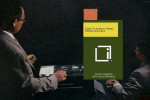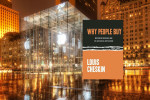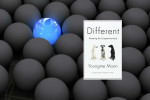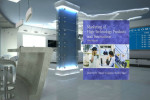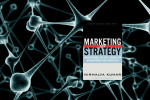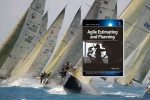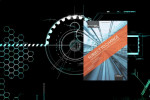The Esdel, the Thunderbird, and the Sputniks
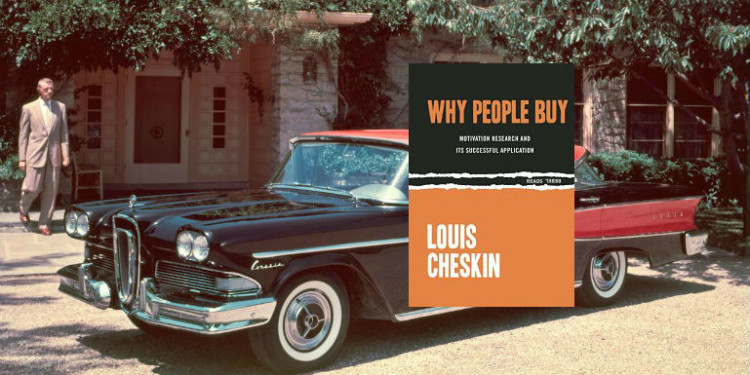
Why People Buy by Louis Cheskin
Many of Louis Cheskin’s motivation research themes come together in his evaluation of the 1958 Ford Edsel market launch. He predicted the failure of the car that the Ford Motor Company put all its marketing muscle behind. Sensitivity to social and cultural forces, the need for unconscious level market research, and emphasis on a strong brand which encompasses emotionally resonant ideas are key aspects of Cheskin’s method within Why People Buy. The Edsel failed on all three counts.
The new consumer environment
The new products in the 1920’s did not have to compete with comparable products. The new products were not new brands, they were truly new products, not comparable to existing products. The Model T Ford competed with the horse and buggy, not with cars that performed about as well and sold at a price as low as the Ford.
In our highly industrialized complex society, in an economy of abundance, buying a belt is not a mere routine act, as it is in a craft society of low production and consumption sufficient for survival. In our atomic age, the mere act of buying a belt…is filled with deep psychological implications.
One of Cheskin’s key insights was that our psychological needs change and amplify as our economic conditions change. Much of his writing was an attempt to pull marketing executives out of outdated models and assumptions and into a realization of the new market landscape. Because buyers deep needs changed (and so did their ability to have those needs satisfied), marketing had to change. Old techniques of repetition and saturation no longer motivated buyers who were seeking prestige.
Sputniks
The discovery, that while we were fussing with useless decorations, they were making satellites and intercontinental ballistic missiles, had a profound psychological effect on almost every American.
The Sputniks made us more serious, more practical but not more rational.
In an extended example that spans several sections of the book, Cheskin discusses the effect the launch of the Sputniks had on American consumer tastes. His team’s research indicated that consumer preferences changed radically between 1957 and 1958. Although other researchers surmised that the economic recession was responsible for more frugal attitudes, Cheskin believed that the sudden leapfrogging of US space capabilities brought the American public back down to earth. Seeing their previous technological supremacy at risk, the public became less interested in excessive ornamentation, chrome, and frivolous decoration. He believes this specific issue was one of the key factors in the failure of the Ford Edsel.
This CBS News report from October 1957 highlights the uncertainty and fear that the Russian space activities engendered. Suddenly, there was a high speed orbiting electronic device with a view of the Earth–and the US didn’t have one:
[youtube=https://www.youtube.com/watch?v=KMFvr1VwSSo&w=530&h=397]
The Edsel
Compare Thunderbird with Edsel. Both cars are made by Ford. The Thunderbird suggests action. It has appropriate symbolism. What does Edsel symbolize? It is the name of a gentleman. It is the name of the man who was head of the company that manufactures the car. What kind of image does it bring to your mind? What symbolism does it have? What association does it have with the character of the particular car? What does it mean?
Cheskin finds several causes for the lack of Esdel market adoption:
1. The car’s styling was not the result of sound market research. Cheskin brought social science to market research and found success applying unconscious level testing.
2. “The product was not planned to meet a specific consumer need.” This is the death blow for the any product.
3. Ford was unable to adjust for the psychological effect that the Russian satellites had on the American people. Although it was a factor outside their control, they had no tests available to discern the radical change in consumer preferences.
4. Due to the recent economic downturn and the psychological effect of the Russian satellites, fewer consumers wanted to pay for “purposeless gingerbread on all cars, including the Edsel.”
5. The car did not live up to a much-publicized “image of quality, modernity and unusualness”. The image in the consumer’s mind of the car was not matched by the image of the car itself–“there was great disappointment.”
Moreover, Cheskin accuses the Edsel team of blunt-force advertising–hitting the customer between the eyes with repetitive advertising. There is no appeal to the senses with the Edsel. No prestige factor. Just the facts. And a big red light on the dash.
Obviously, the 1958 Edsel was launched on the assumption that the design of the car was not a vital factor in marketing an automobile and the name of the car was of minor importance.
The commercial below highlights several of the Edsel’s innovative features: its gear shifter was integrated into the steering wheel, a speedometer that glows red when the car exceeds 55mph, a single dial for heat/ventilation/air conditioning, and remote trunk release. In this commercial, the car is shown zipping up a steep hill, demonstrating engine power. Better yet, the dealers are “fine businessmen!” Pricing is “just above the lowest” and ranging all the way through the “medium price field.”
[youtube=https://www.youtube.com/watch?v=hbbJmsRYrnc&w=530&h=397]
Here is Henry Ford’s grandson describing to his dealers the “once in a life time opportunity” represented by the ill-fated car named after his father. He describes it as the “only truly new car on the American road” whose purpose is “to give the Ford Motor Company a larger share of the market.” The Edsel represents the “sum and total knowledge we have accumulated to date”. Without a single movement of his body, Ford tells his dealers the whole company is behind them.
[youtube=https://www.youtube.com/watch?v=upH1yZpUpu8&w=530&h=397]
While Cheskin says the car represents “a gentleman”, Henry Ford II says it represents the “ideals and principles of automotive styling which were so strongly held by [Edsel Ford] in whose honor it is named.” What are those ideals and principles? Would any buyer know or associate with them? Cheskin was keenly focused on the essence of the product and the brand–what need does it serving and what does it represent?
The Thunderbird
Cheskin compares the Edsel to the Thunderbird, both manufactured by Ford and both introduced in the same year. The first 20 seconds of the Thunderbird commercial below portray horses, “thoroughbreds”, and the people who ride them (thoroughbreds in their own right). The car makes its appearance among horses and horse people when the announcer says the car “calls up the picture of youth, and spirit, and romance.” It is not named after an automotive executive, nor does it represent “automotive styling”. These were Cheskin’s key insights–emotion, images, and ideas sell.
The Thunderbird has “beautiful and clean lines”. It is “unique in personality and prestige”–just like you (want to be)! The features of the car are features for people–wide doors, head room, and leg room. Smiling actors demonstrate. It handles “with an assurance you’ll have to feel to believe.” While the Edsel powers up a steep hill, the Thunderbird glides along a grassy knoll chased by sleek horses and their riders. The thoroughbred image is reinforced again. “It’s nimble, it’s quick. You’ll think roads were gooved for Thunderbirds.” You will own the road–who needs a red light to indicate you’ve gone over the speed limit?
The price of a Thunderbird? Far below that of other luxury cars. Not the hazy range of the Edsel. How will you know to buy it? “Your heart will tell you why the Thunderbird is America’s most wanted car.” The affluent gentleman in riding breeches hopping out of the car is all the proof you need of its prestige. No mention is made of the dealers–at the end of the commercial you want to join those streamlined, wealthy thoroughbreds! Prestige, indeed.
Why People Buy: Motivation Research and Its Successful Application (Rebel Reads)

